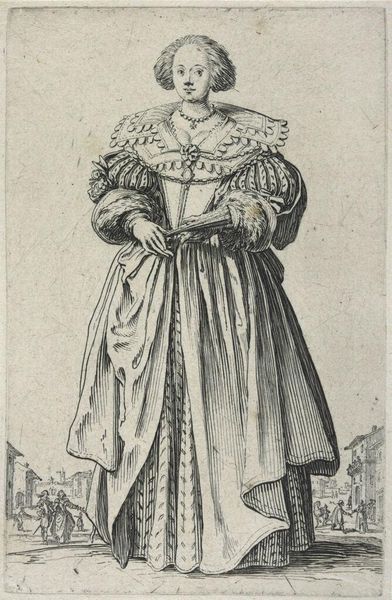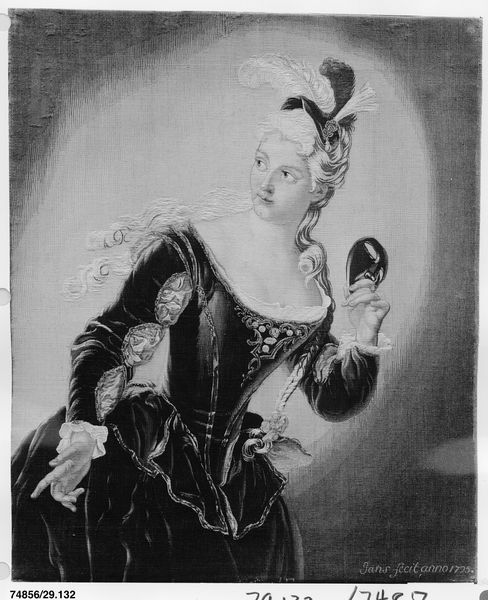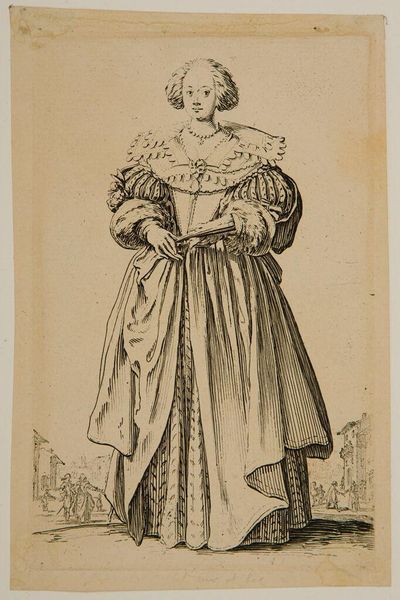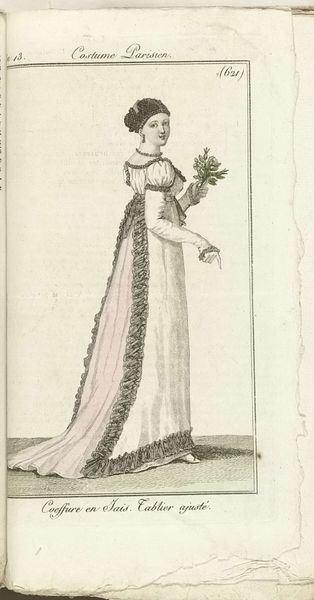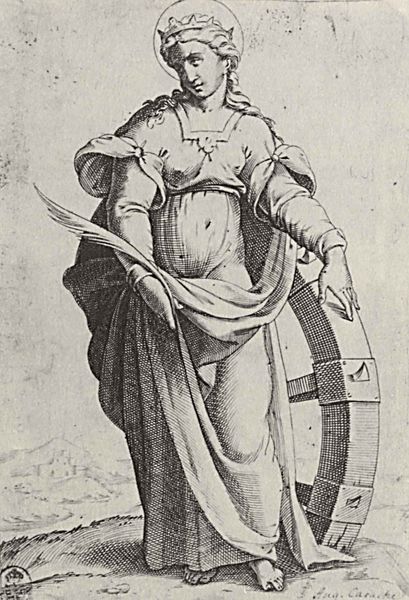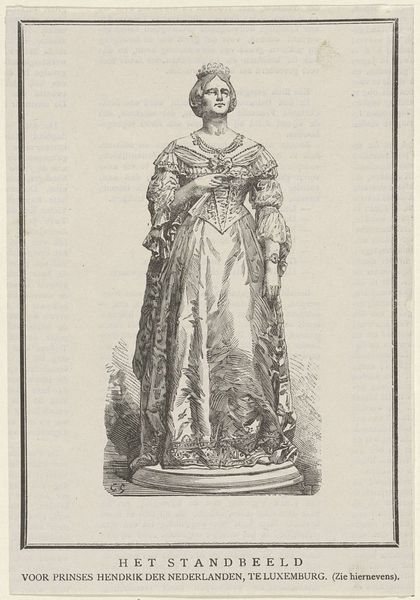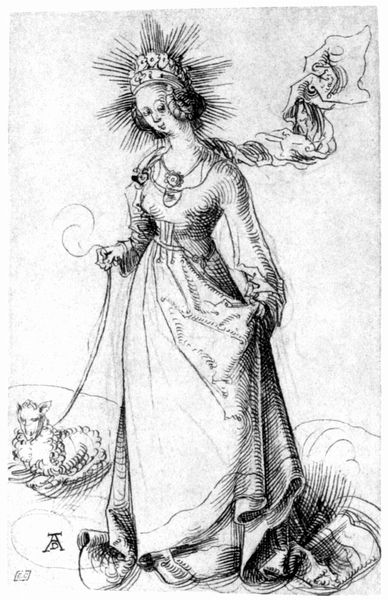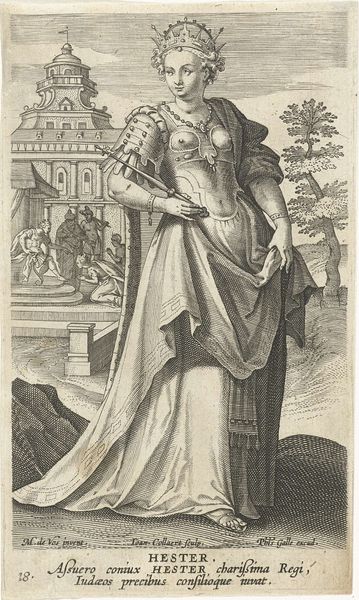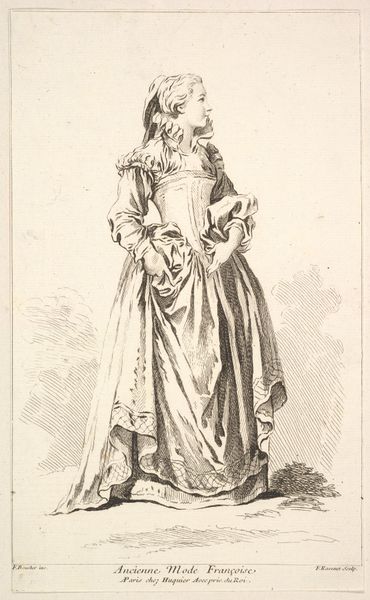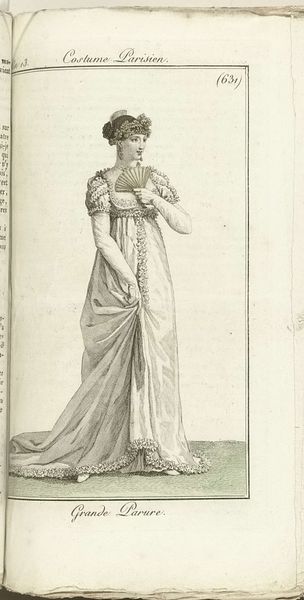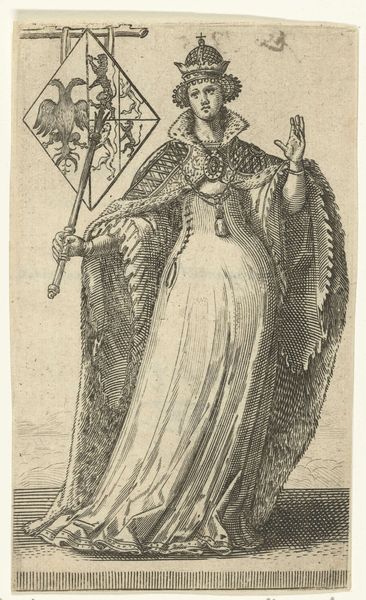
drawing, print, engraving
#
drawing
#
allegory
# print
#
figuration
#
11_renaissance
#
history-painting
#
northern-renaissance
#
engraving
Dimensions: plate: 6 x 3 9/16 in. (15.3 x 9 cm)
Copyright: Public Domain
Curator: Look at this engraving, "Europa, from Proposopographia," created between 1580 and 1595 by Philips Galle. It's part of the Met's collection. My initial response to this piece is quite fascinating, isn't it? She appears as a personification of a continent laden with cultural significance and power. Editor: Immediately, I'm drawn to the stark contrasts of the engraving technique. The crisp lines delineating the figure against that simple background really bring her forward, like a prototype in metal casting. What was the process of making these prints, how does this influence perception and its relation to labor? Curator: It’s believed to have been conceived for a book of geographical allegories, each figure symbolizing a different territory, I feel we should analyze its impact from a feminist perspective, questioning her agency within this visual representation. Is she empowered or objectified, bound by the expectations of the patriarchy? How is her identity represented, we could consider postcolonial discourse for that? Editor: Well, consider what is depicted - Galle uses engraving, a skilled craft requiring particular labor - we need to think about how this materiality signifies production, a social and political economy? It's like looking at a map—not just of land, but of resources, labour, and distribution. Curator: Right, the attributes. In her hand, she holds grapes, signifying, presumably, the fertile lands and the bounty of wine, resources like these impact the social status, what else? Editor: Her ornate clothing, the details in the etching suggest some complex weaving skills. The crown symbolizes authority and power that's been produced or manufactured, doesn't it? But the materials that can build that, what could it mean in that society, for women and other folks of marginalized status, can they rise in the manufacturing and building of these materials of power. What opportunities and labor conditions does that represent? Curator: Definitely, and beyond surface observations, think of Europa's loaded positionality in European history— colonialism, cultural imperialism, etc. Her pose suggests, not necessarily strength but a calm dignity. But does that calm come at the cost of suppressing marginalized voices within Europe's geographical boundaries and beyond? The gaze tells it all. Editor: A materialist point of view brings forth ideas of commodity, consumption, and even class stratification in Renaissance society... Curator: Precisely! Bringing that material reality and social reality together enriches our view and helps us to see that these images, like this “Europa”, continue to ripple into modern gendered and power constructs. Editor: Examining art through production allows me to think, not just how something looks but what went into making that look and how did those processes define life? It lets us see people within them.
Comments
No comments
Be the first to comment and join the conversation on the ultimate creative platform.
